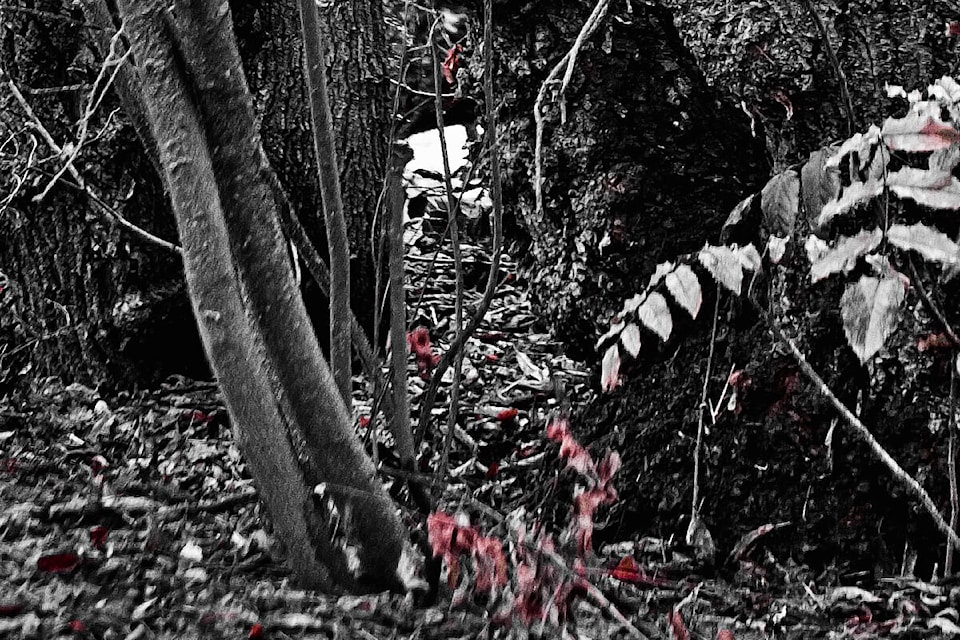This past week I had an appointment in Salmon Arm. It was raining after my appointment, but I had planned on having a photo walk along the Salmon Arm Wharf and I wasn’t going to let a few drops of cold winter rain stop me.
I had brought my little Fuji XT1 with both of its lenses: a 18-55 mm and a 55-200 mm. That Fuji camera is a crop frame and with that size sensor, it means that effectively, the 18-55 mm is like a 27-82 mm. That is called a “crop factor.”
You use the crop factor number, multiply it by the lens focal and you get the equivalent focal length relative to the once-used 35-mm film size. For example, my Fuji has a crop factor of 1.5x, so if you take the 18-mm lens and multiply it by this number, the result is 27-mm. So the lenses I was using were equivalent to having a 27-82 mm and an 82-300 mm.
It was the 55-200 mm lens that I used the most on my walk.
There is a path that goes through the bushes and trees along the lake. That path is wooded on the marshy lakeside and looks over a waterway used by boaters towards the wharf. As I carefully ambled along the very icy footpath I photographed anything that caught my attention.
The previous night, Jo’s son Emit joined me for our weekly hot chocolate and movie night. We had watched a couple of episodes of the TV show “Grimm” and thought I would find a movie that had lots of action and lots of monsters. I chose “The Hobbit.”
While I walked along the path I thought the leafless and lifeless-looking trees that hung over the footpath were almost like the eerie forbidden forests that Bilbo, Gandalf, Thorin and his band of fighting dwarves went through.
The camera, especially with a telephoto lens, allows one to crop out anything that isn’t part of the story that a photographer wants to create. Sure, there were some interesting lake scapes with a foggy background to photograph, but I was easily finding and trying to create a world like Bilbo had discovered. All one needs is an active imagination. (Or let our imagination take over)
It’s easy to imagine elves, sprites, dwarves and all sorts of unearthly woodland creatures hiding in a dark winter forest if you are in the mood while you look through your camera. Fortunately, the cold rainy winter day was keeping most people off the normally well-used path. I could position myself from any angle I wanted without being bothered by someone in the background.
I was prepared and dressed for the weather, although I am thinking I should have had my ice spikes for that slippery path. I kept wiping off my camera, but because I always pushed my hood back, my hair was wet by the time I got back to my car.
I’ll finish with this advice by photographer Ryan McAfee: “Think about some of the most creative shots you’ve ever seen in a movie, television show, or video. What made them stand out to you? The composition? The movement?
Chances are it wasn’t a standard locked-down shot of a talking head, right? The reason these shots stick out is because they’re different. They’re creative. They were designed to invoke a feeling and make you remember it well after the fact. That’s where creative use of the camera comes in.”
Stay safe and be creative. These are my thoughts for this week. Contact me at www.enmanscamera.com or emcam@telus.net.
